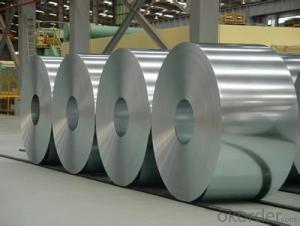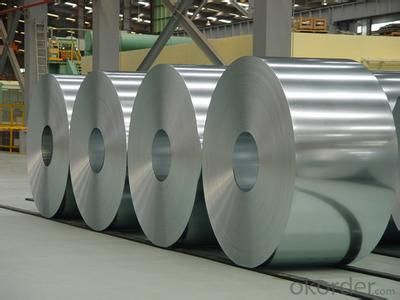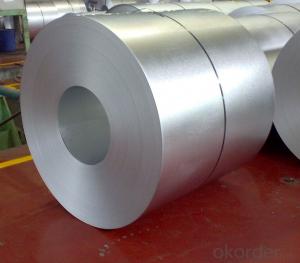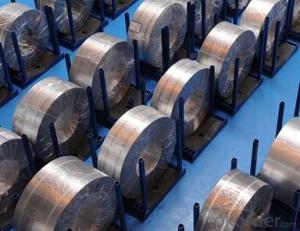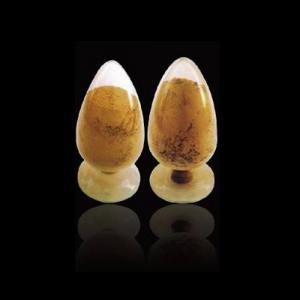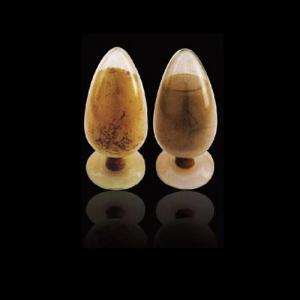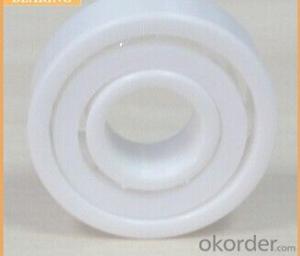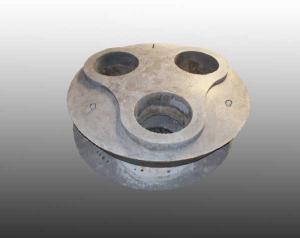Monolithic Refractories Hot-Dip Aluzinc Steel Building Roof Walls in Best Price Best Quality
- Loading Port:
- China main port
- Payment Terms:
- TT or LC
- Min Order Qty:
- 50 m.t.
- Supply Capability:
- 10000 m.t./month
OKorder Service Pledge
OKorder Financial Service
You Might Also Like
Hot-dip Aluzinc Steel Building Roof Walls in Best Price Best Quality
1. Description of the Hot-dip Aluzinc Steel:
Hot-dip aluzinc steel structure is composed of aluminum-zinc alloy, consisting of 55% aluminum, 43% zinc and 2% at 600 ℃ silicon solidification temperature and composition, the entire structure is made of aluminum - iron - silicon - zinc, to form a dense quaternary crystals an alloy.
Hot-dip aluzinc steel has many excellent features: strong corrosion resistance, is three times the pure galvanized sheet; zinc surface with beautiful flowers, can be used as a building outside board.
Applications of hot-dip aluzinc steel:
1)Building: roof, walls, garages, soundproof walls, pipes and modular housing.
2)Automotive: muffler, exhaust pipes, wiper accessories, fuel tank, truck boxes, etc.
3)Appliances: refrigerator back, gas stove, air conditioners, microwave oven, LCD frame, 4)CRT-proof band, LED backlight, electrical cabinets, etc.
5)Farm: barn, sheds, silos, piping and other greenhouse.
2.Main Features of the Hot-dip Aluzinc Steel:
• Excellent corrosion resistance
• High temperature oxidation resistance
• Good manufacturability
•Beautiful appearance
•Surface coating
•Cost-effective
3.Hot-dip Aluzinc Steel Images


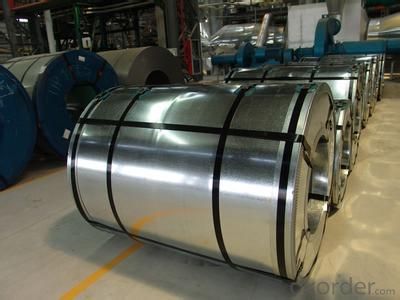
4.Hot-dip Aluzinc Steel Specification
AVAILABLE SPECIFICATION
HOT-DIP ALUZINC STEEL COILS | |
THICKNESS | 0.16mm-3.5mm |
WIDTH | 1250mm MAX |
COATING MASS | 30g/ m2-185 g/ m2 |
SPANGLE | Regular Spangle, Minimized Spangle, Zero Spangle |
SURFACE TREATMENT | Chromated / non-chromated, Oiled / non-oiled, Anti Finger Print |
COIL INNER DIAMETER | 508mm or 610mm |
HOT-DIP ALUZINC STEEL COILS | |||
COMMERCIAL QUALITY | ASTM A792M-06a | EN10327-2004 | JIS G 3321:2010 |
STRUCTURE STEEL | SS GRADE 230 SS GRADE 255 SS GRADE 275 SS GRADE 340 SS GRADE 550 | S220GD+AZ S250GD+AZ S280GD+AZ S320GD+AZ S350GD+AZ S550GD+AZ | SGLC400 SGLC440 SGLC490 SGLC570 |
5.FAQ of Hot-dip Aluzinc Steel
We have organized several common questions for our clients,may help you sincerely:
1.What advantages does your company have?
Cement : Annual capacity of 400 million tons, No. 1 in the world
Fiberglass: Annual capacity of 1 million tons fiberglass, No. 1 in the world.
Composite Materials — Rotor Blade: Annual production capacity of 15,000 pieces, No.1 in China, Top3 worldwide
Light Weight Building Materials: Annual capacity of 1.65 billion square meters of gypsum board, No. 1 in the world.
Commercial concrete: Annual capacity of 0.35 billion cubic meters, No. 1 in the world.
Refractory Material: Annual capacity of 40,000 tons casting refractory, No.1 in the world.
2.What advantages do your products have?
Firstly, our base material is of high quality, Their performance is in smooth and flat surface,no edge wave ,good flexibility.
Secondly, high quality zinc ingoats, 97.5% zinc,1.5% silicon,1% others, the same zinc coating measured by metal coating thickness or by zinc weight
Thirdly, high precision: Tolerance strictly according to ASTM or JISG standard even more rigid.
We have full stes of testing equipment(for t best, cupule,chromatism,salt spray resistance, etc) and professional engineers.
- Q: How do monolithic refractories contribute to the overall productivity of iron and steel plants?
- Monolithic refractories play a crucial role in enhancing the overall productivity of iron and steel plants in several ways. Firstly, their high thermal conductivity and insulation properties help to maintain and regulate the temperature inside the furnaces, ensuring efficient and consistent heat distribution. This facilitates the optimal melting and refining of iron and steel, reducing energy consumption and improving productivity. Additionally, monolithic refractories offer excellent resistance to chemical attacks, such as the corrosive effect of molten metals and slags. This resistance enables longer refractory lifespan, reducing downtime for repairs and replacements, and ultimately maximizing the plant's operational efficiency. Moreover, the monolithic nature of these refractories allows for easy installation and repair, minimizing the time and effort required for maintenance activities. This quick and efficient process further contributes to the overall productivity of iron and steel plants by reducing production disruptions. In summary, monolithic refractories enhance the overall productivity of iron and steel plants by providing efficient heat management, superior chemical resistance, and easy maintenance, leading to improved energy efficiency, reduced downtime, and enhanced operational efficiency.
- Q: How do monolithic refractories perform in ladle lining applications in the iron and steel industry?
- Due to their excellent performance and durability, monolithic refractories are extensively utilized in ladle lining applications within the iron and steel industry. These refractories, which consist of a single material composition, offer numerous advantages over traditional brick linings. One significant benefit of employing monolithic refractories in ladle lining applications is their exceptional resistance to thermal shock. Ladles in the iron and steel industry experience extreme temperature fluctuations during the steelmaking process, including the pouring of molten metal and subsequent cooling. To guarantee the integrity of the ladle lining, monolithic refractories are specifically designed to endure these rapid temperature changes without cracking or spalling. In addition to their thermal shock resistance, monolithic refractories also demonstrate excellent resistance to chemical attack. The lining materials of ladles in the iron and steel industry are exposed to highly corrosive molten metal and slag, which can degrade over time. Nevertheless, monolithic refractories are formulated with high-quality raw materials that provide exceptional chemical stability, preventing the erosion and penetration of corrosive substances. Moreover, monolithic refractories offer superior mechanical strength in comparison to traditional brick linings. This is particularly crucial in ladle lining applications, as the lining must withstand the weight of the molten metal and the mechanical stresses associated with ladle handling and transportation. Monolithic refractories possess excellent load-bearing capabilities, ensuring the structural integrity of the ladle lining even under heavy loads. Another advantage of monolithic refractories is their ease of installation. Unlike brick linings, which require meticulous bricklaying, monolithic refractories can be installed using various techniques, such as gunning or casting. This allows for faster and more efficient lining repairs or replacements, reducing downtime during ladle maintenance. Consequently, iron and steel manufacturers can achieve increased productivity and cost savings. In conclusion, monolithic refractories perform exceptionally well in ladle lining applications within the iron and steel industry. Their resistance to thermal shock and chemical attack, superior mechanical strength, and ease of installation make them an ideal choice for ensuring the longevity and reliability of ladles in steelmaking operations.
- Q: How does the composition of monolithic refractories impact their performance?
- The composition of monolithic refractories plays a crucial role in determining their performance. Monolithic refractories are essentially unshaped refractory materials that are used to line furnaces, kilns, and other high-temperature equipment. They are preferred over traditional brick and mortar refractories due to their ease of installation and ability to conform to complex shapes. The composition of monolithic refractories includes various components such as aggregates, binders, and additives. The type and proportion of these constituents significantly influence the physical, mechanical, and thermal properties of the refractory material. Aggregates are the major component of monolithic refractories and provide the structural integrity. They can be made of various materials like alumina, silica, magnesia, and carbon. Each aggregate has its own unique properties that determine the refractory's resistance to heat, chemical attack, and mechanical stress. For example, alumina aggregates offer excellent resistance to high temperatures and chemical corrosion, while carbon-based aggregates are preferred for their high thermal conductivity. Binders are added to the mix to provide cohesion and improve the refractory's strength. Common binders include clay, calcium aluminate cement, and colloidal silica. The selection of binders depends on the desired strength, workability, and setting time of the refractory material. Additives are incorporated in the composition to enhance specific properties. They can improve the refractory's resistance to thermal shock, abrasion, or chemical attack. Additives like zirconium oxide, silicon carbide, and graphite are often used to enhance the performance of monolithic refractories in specific applications. The proper combination and proportion of these constituents are crucial for achieving the desired performance of monolithic refractories. The composition affects the refractory's thermal conductivity, thermal expansion, density, porosity, and chemical resistance. For instance, a higher alumina content would improve the refractory's resistance to high temperatures and chemical corrosion, while a higher silica content would enhance its insulating properties. In conclusion, the composition of monolithic refractories has a significant impact on their performance. The selection of aggregates, binders, and additives must be carefully considered to achieve the desired properties and ensure optimal performance in specific high-temperature applications.
- Q: What are the main causes of monolithic refractory failure in the iron and steel industry?
- The main causes of monolithic refractory failure in the iron and steel industry include thermal cycling, chemical attack, mechanical wear, and improper installation or curing.
- Q: How do monolithic refractories contribute to the overall productivity of iron and steel production?
- Monolithic refractories play a critical role in enhancing the overall productivity of iron and steel production. These refractories are essential components used in the lining of high-temperature furnaces and other equipment used in these industries. One way monolithic refractories contribute to productivity is by providing excellent thermal insulation. With their high thermal conductivity, they help to reduce heat loss from the furnaces, thereby minimizing energy consumption and improving overall efficiency. This insulation property allows for higher operating temperatures, leading to faster and more efficient production processes. Additionally, monolithic refractories offer superior resistance to thermal shock and chemical corrosion. In the iron and steel production process, various harsh conditions are encountered, such as rapid temperature changes and exposure to molten metal and slag. Monolithic refractories are designed to withstand these extreme environments, ensuring longer service life and reduced downtime for maintenance and repairs. This directly translates to increased productivity and reduced production costs. Moreover, monolithic refractories provide better dimensional stability compared to traditional brick refractories. Their ability to conform to complex shapes and structures allows for improved lining design, facilitating better heat transfer and distribution. This uniformity in heat distribution contributes to enhanced process control and greater consistency in product quality. Furthermore, the installation and repair of monolithic refractories are relatively easier and faster compared to traditional brick refractories. This ease of installation and repair reduces downtime during maintenance, allowing for more continuous production. The shorter downtime leads to increased productivity and higher output. In summary, monolithic refractories contribute to the overall productivity of iron and steel production by providing excellent thermal insulation, resistance to thermal shock and chemical corrosion, better dimensional stability, and ease of installation and repair. These properties result in improved energy efficiency, reduced downtime, enhanced process control, and higher product quality, ultimately leading to increased productivity and profitability for the industry.
- Q: What are the environmental considerations associated with monolithic refractories?
- Monolithic refractories, utilized in various high-temperature applications, pose several environmental concerns that must be taken into account. Firstly, the production of monolithic refractories necessitates the utilization of raw materials such as clay, silica, and alumina, which are frequently extracted from the earth, resulting in habitat destruction, soil erosion, and water pollution. Furthermore, the manufacturing process of monolithic refractories commonly involves considerable energy consumption and the emission of greenhouse gases. The firing of refractory materials necessitates high temperatures, often achieved through the combustion of fossil fuels, contributing to carbon dioxide emissions and climate change. These emissions have broad environmental consequences, including air pollution, acid rain, and ozone layer depletion. Additionally, the disposal of monolithic refractories at the end of their useful life can present environmental challenges. Although monolithic refractories are highly durable and long-lasting, there may come a time when replacement or repair is necessary. The disposal of refractory waste can be problematic as it often contains hazardous substances such as chromium, lead, and asbestos. Inadequate disposal methods can lead to contamination of soil and water, posing risks to both human health and the environment. To address these environmental concerns, efforts are underway to develop more sustainable refractory materials and manufacturing processes. For instance, alternative raw materials like recycled refractory materials or industrial by-products can be employed to decrease the environmental impact of mining. Moreover, the adoption of more energy-efficient manufacturing techniques, such as utilizing renewable energy sources or implementing advanced firing technologies, can help minimize greenhouse gas emissions. In conclusion, the environmental considerations associated with monolithic refractories encompass habitat destruction, energy consumption, greenhouse gas emissions, and waste disposal. Prioritizing sustainability and implementing measures to mitigate these environmental impacts, such as using alternative raw materials, enhancing manufacturing processes, and endorsing responsible waste management practices, are imperative for the refractory industry.
- Q: What are the key considerations when selecting monolithic refractories for tundish applications?
- When selecting monolithic refractories for tundish applications, there are several key considerations that should be taken into account. First and foremost, the refractory material must have excellent thermal shock resistance. Tundishes are subjected to extreme temperature fluctuations, as molten metal is poured into them and then drained out. A refractory material with poor thermal shock resistance will quickly degrade and fail under these conditions, leading to costly repairs and downtime. Another important consideration is the refractory's resistance to chemical attack. Tundishes are often exposed to aggressive chemical environments, as they come into contact with molten metal and various slag compositions. The refractory material must be able to withstand these corrosive elements and maintain its integrity over time. Additionally, the refractory's mechanical strength is crucial. Tundishes are subject to physical stresses, such as the weight of the molten metal and the movement of the tundish itself. A weak refractory material will be prone to cracking and failure, jeopardizing the overall performance and longevity of the tundish. The ease of installation and repair should also be considered. Monolithic refractories are typically cast or gunned in place, so it is important to select a material that can be easily applied and shaped to fit the tundish design. Similarly, if repairs are necessary, the refractory material should be capable of being patched or replaced without significant disruption to operations. Finally, cost is always a consideration. While it is important to select a high-quality refractory material that meets the specific requirements of the tundish, it is also necessary to consider the overall cost-effectiveness. This includes the initial material cost, installation and repair expenses, and the expected lifespan of the refractory. In summary, the key considerations when selecting monolithic refractories for tundish applications include thermal shock resistance, chemical resistance, mechanical strength, ease of installation and repair, and cost-effectiveness. By carefully evaluating these factors, one can choose a refractory material that will provide optimal performance and durability in tundish applications.
- Q: Can monolithic refractories be used for lining iron and steel ladles during casting and pouring?
- Yes, monolithic refractories can be used for lining iron and steel ladles during casting and pouring. Monolithic refractories are a type of refractory material that is composed of a single, homogeneous structure, as opposed to traditional refractory bricks which are made up of multiple pieces. Monolithic refractories are often preferred for lining ladles in iron and steel casting due to their numerous advantages. Firstly, they have excellent thermal shock resistance, allowing them to withstand the high temperatures experienced during casting and pouring processes. This is crucial as ladles are constantly exposed to extreme heat. Additionally, monolithic refractories offer superior erosion and corrosion resistance, ensuring that the lining can withstand the harsh conditions and chemical reactions that occur when molten metal comes into contact with the ladle. They also have good thermal insulation properties, reducing heat loss and increasing energy efficiency during the casting process. Furthermore, monolithic refractories are highly versatile and can be easily installed, repaired, or replaced. They can be formed and shaped to fit the specific requirements of ladles, providing a tight and secure lining. This flexibility also allows for quick maintenance and repair, minimizing downtime and optimizing productivity. In conclusion, monolithic refractories are an ideal choice for lining iron and steel ladles during casting and pouring. Their thermal shock resistance, erosion and corrosion resistance, thermal insulation properties, and ease of installation make them well-suited for this demanding application.
- Q: What are the challenges in repairing and maintaining monolithic refractories?
- Repairing and maintaining monolithic refractories poses several challenges. One primary challenge lies in the intricate composition of the materials used in these refractories. They typically consist of various components, including aggregates, binders, and additives. The selection and proportioning of these components significantly affect the refractory's performance and durability, making it difficult to determine the most appropriate repair or maintenance method. Another obstacle arises from the extremely high temperatures at which monolithic refractories operate. These materials are specifically designed to withstand extreme heat, ranging from several hundred to several thousand degrees Celsius. Repairing or maintaining them under such conditions necessitates specialized equipment and techniques to ensure worker safety and repair integrity. Moreover, monolithic refractories often face harsh environments, such as corrosive gases, chemical reactions, and mechanical stresses. These factors can lead to gradual degradation and damage, requiring regular inspections and maintenance. However, identifying and addressing these issues promptly can be challenging as the damage may not always be visible or easily accessible. Furthermore, monolithic refractories are commonly employed in complex industrial processes like steelmaking, cement manufacturing, and petrochemical production. These processes typically involve continuous operation, limiting the available time for repairs and maintenance. Finding suitable windows of opportunity for maintenance and coordinating process shutdowns can pose logistical challenges. Lastly, the cost of repairing and maintaining monolithic refractories can be substantial. The materials used in these refractories tend to be expensive, and the labor and equipment required for repairs and maintenance can accumulate costs. Striking a balance between repair expenses, productivity maintenance, and extending the refractories' service life can challenge plant operators and maintenance teams. In conclusion, the challenges associated with repairing and maintaining monolithic refractories arise from the complex materials used, the high temperatures involved, the harsh operating environments, the complexity of industrial processes, and the cost considerations. Overcoming these challenges necessitates expertise, meticulous planning, and effective coordination to ensure the longevity and optimal performance of monolithic refractories.
- Q: How do monolithic refractories resist corrosion and erosion in the iron and steel industry?
- Monolithic refractories in the iron and steel industry are designed to resist corrosion and erosion through a combination of their composition and application techniques. Firstly, the composition of monolithic refractories includes high-quality raw materials such as alumina, magnesia, and silica. These materials possess excellent resistance to corrosion and erosion. Alumina, for example, is highly resistant to chemical attack and can withstand high temperatures, making it ideal for protecting against the corrosive nature of the iron and steel industry. In addition to the choice of materials, the application techniques used in installing monolithic refractories also play a crucial role in their resistance to corrosion and erosion. Monolithic refractories are typically installed using various methods such as gunning, ramming, or casting. These techniques ensure a tight and seamless bond between the refractory and the steel structure, minimizing the chances of corrosion and erosion. Furthermore, monolithic refractories can be customized to suit the specific needs of different parts of the iron and steel industry. For example, areas exposed to molten metal require refractories with high thermal conductivity and excellent resistance to chemical attack. By tailoring the refractory to the specific application, it becomes more effective in resisting corrosion and erosion. Moreover, monolithic refractories are often designed with additives or binders that enhance their resistance to corrosion and erosion. These additives can provide additional protection against chemical attacks from molten metal or corrosive gases, making the refractory even more durable in harsh conditions. Overall, monolithic refractories resist corrosion and erosion in the iron and steel industry due to their composition, application techniques, customization, and the inclusion of additives. By combining these factors, monolithic refractories provide excellent protection to the steel structures, ensuring their longevity and efficiency in the challenging environments of the iron and steel industry.
Send your message to us
Monolithic Refractories Hot-Dip Aluzinc Steel Building Roof Walls in Best Price Best Quality
- Loading Port:
- China main port
- Payment Terms:
- TT or LC
- Min Order Qty:
- 50 m.t.
- Supply Capability:
- 10000 m.t./month
OKorder Service Pledge
OKorder Financial Service
Similar products
Hot products
Hot Searches
Related keywords
